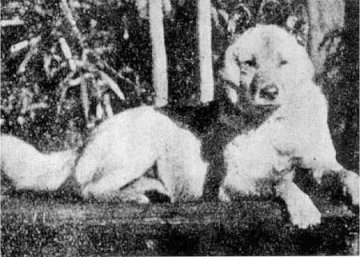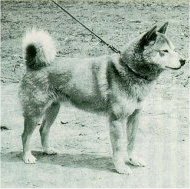History of the Shiba inu
The Shiba has been a native breed to Japan since the primitive ages.
The Shiba’s habitat was in the mountainous area facing the Sea of Japan and was used as a hunting dog for small animals and birds. There were slight differences in the breeds according to the areas where they were raised. As dogs like English Setters and English pointers were imported from England during the period of 1868-1912, hunting became a sport in Japan and crossbreeding of the Shiba with those English dogs became prevalent and a pure Shiba became rare so that by 1912-1926 pure Shiba’s confined to these areas became exceedingly scarce.
On May 5, 1928 Dr. Hirokichi Saito and his group met to establish Nihonken Hozonkai
( Association for Preservation of the Japanese Dog ). It all started when Dr. Saito was not able to find even a single indigenous dog after a long search and realized that the pure blood Japanese dogs were in danger of extinction. In those days, pure blood Japanese dogs were almost non existent in the cities and the early pioneers of Nippo travelled far and wide in search of indigenous dogs in the mountainous area of Japan.
Their intention was to preserve the Japanese dogs as true to the original form as possible by seeking out those primitive hunting dogs still existing in the remote areas and setting up a planned breeding program. The academic circles supported the move by carrying out researches from historical, zoological, archeological and anthropological perspectives. The first president of Nippo was Dr. Kaburagi, a professor at Tokyo University. In 1932 Nippo published it’s first news letters and began registering Japanese dogs. Nippo was recognized by the Ministry of Education in 1937 and received a support of the Japanese Government for preserving the Japanese heritage and culture. It has been active as the most authoritative kennel club in Japan for the past seventy years.
On November 6, 1932, the first Nippo Show was held at Ginza, in the center of Tokyo.
Out of 81 dogs entered, only 10 dogs were rated as having stock quality and awarded the “ Commendation Award”. Out of 10 dogs, 4 were Akitaken, 2 were Hokkaidoken,
2 were Kishuken, 1 was a medium size dog from Shinshu area and 1 was Shiba inu. The Shiba was a red sesame male named “TAKO “. He was found in the mountainous area of the Toyama Prefecture ( Central Japan ).
Tako was the first Shiba to be registered by Nippo and since Tako, Nippo has maintained a registration records of over a million and half Shiba’s.
Dr. Saito found a red male hunting dog with sickle tail in the deep mountains of the Gumma Prefecture in 1928. Dr. Saito named him “JUKKOKU “.

Jukkoku was originally from the other side of Mountains in the Nagano Prefecture where these small hunting dogs were known as “Shiba inu “ by the local people. There are several explanations on the origin of word “Shiba “, it means “small”, however, from the Kanji (Japanese written character) used for Shiba inu, it means “Light brown dried brushwood”. “Inu”means dog. Shiba’s coat color blend in well with the mountain side of Shinshu. Jukkoku made the name “Shiba inu “famous and many fanciers visited the villages around the mountains of Nagano to bring back “Shiba inu “to the cities.
In 1933 at the 2nd Nippo Show, a male “Yuwa “and female “Yuri “from the Shimane Prefecture ( San-In region of Japan) received Commendation Awards. They were known as Sekishuken and several good specimen of Sekishuken were shown at the subsequent Nippo Shows. At the 5th Nippo Show in 1936, Sekishuken “ISHI “ a red male born on Novemver 2, 1930, Nippo registration number 170, received Commendation Award. Ishi was bred to “KORO “ a black and tan dog from the mountains of Shikoku to produce “ AKA FUGOKU “ on January 6, 1939. Aka received Commendation Award at the 8th Nippo Show and this young dog was destined to be a very important sire leading to Naka. Aka was bred to “HANA “ from the Tottori Prefecture
( San-In region of Japan) to produce a female “BENIKO AKASHISO”. He was also bred to “MEIGETSU” from the Yamanashi Prefecture ( Shinshu region of Japan) to produce a male “AKANI HATAYAMASO”, Akani and Beniko, half brother/sister, were bred together to produce “NAKA” on 16 April 1948.
Naka was the first Shiba ever to win the Nippo Best Dog Award ( equivalent to the Best in Show at that time against the other Japanese breeds)
 “NAKA”
became the foundation sire of all 4 famous bloodlines in Japan.
“NAKA”
became the foundation sire of all 4 famous bloodlines in Japan.
A Nippo judge and one of the leaders of Nippo analysed the Winners of SAIKOUSHO
( Best Shiba Award) in the Grand Nationals for the past 20 years and concluded that there are 4 predominant bloodlines continuously producing the Winners. They are HAKUBA NO GEN LINE ( Gen line), KOROTAMA LINE ( Ichisuke line), TENKOU LINE and MATSUMARU LINE.
PEDIGREE OF NAKA, AKASHISO:
RED, MALE, NIPPO: 1216 D.O.B: APR. 16, 1948 OWNER: AKASHISO
G.G.Sire: ISHI from SHIMANE Pref.
G.Sire: AKA, FUGOKU
G.G.Dam: KORO from SHIKOKU Is.
Sire: AKANI, HATAYAMASO
G.Dam: MEIGETSU from YAMANASHI Pref.
NAKA, AKASHISO
G.G.Sire: ISHI from SHIMANE Pref.
G.Sire: AKA, FUGOKU
G.G.Dam: KORO from SHIKOKU Is.
Dam: BENIKO, AKASHISO
G.Dam: HANA from TOTTORI Pref.
The Shiba’s of early Nippo period were known as JI-INU (local dogs). They were kept by the hunting people of Shinshu area, San-In area and Shikoku. We are able to see in the early documents the mentioning of such local Shiba’s as Shinshu Shiba, San-In Shiba, Mino Shiba, Kawakami Shiba, Jukkoku Shiba, Kiso Shiba, Sekishuken, Inabaken, Tateyamaken etc. There was a movement to preserve such dogs from various localities as separate breeds. However, the second World War, the epidemic disease in 1959 and other factors diminished the small indigenous population, causing a lack of sufficient gene pool to continue with a planned breeding program. There are still a small number of San-In Shiba breeders endeavouring to maintain this local breed of Shiba, but small gene pool is making the task next to impossible. A few remaiming Shiba’s from different localities were at times bred together to enhance the inherent qualities of Shiba’s. The modern Shiba is therefore a mixture of Shiba’s from different localities of Japan causing a slight variation of types. Naka is said to be from the Shinshu Shiba line, but as you have seen from the above pedigree, he is out of Sekishuken ( Ishi ), Shiba from Shikoku ( Koro) and mixture of other various Shiba’s from different parts of Japan including Shinshu.
On September 15, 1934, after extensive researches and discussions, “Standard of the Japanese Dog”was drafted by the Standards Committee led by academic group of
Dr. Kaburagi, Dr. Itagaki, Dr. Kume, Dr. Saito and others. The standard was to be a future guideline for all 6 breeds of the Japanese Dogs.
“The standard is established ( by Nippo)…indicating a path to follow in the future breeding programs based on the intrinsic characteristics of Japanese dogs”.
Intrinsic characteristics of Japanese dogs are stated in the first paragraph of the standard, “Essential qualities and it’s expression”as follows. “The nature of Japanese Shiba’s can be expressed in 3 very important words:
KAN-I, RYOUSEI and SOBUKO.
KAN-I means: strength of character and dignity. Dogs may be lively and bold without being excessively aggressive to the point of noble excellence.
RYOUSEI means: faithful and obedient, dogs should have total trust and attachment to the owners expressing full bond and partnership.
SOBUKO means: natural beauty from seasoned maturity and modest appearance. It’s expressions are feeling of refined simplicity and sober elegance. These qualities are basic nature inborn to all Japanese Dogs and in totality, these qualities expresses the essential characteristics of Japanese Dogs.
The Shiba was designated as the “Indigenous Animal of Japan” and the “Natural Monument”by the Japanese Government in 1936. The original intention of Nippo was to preserve those indigenous hunting dogs which lived with the Japanese people for centuries. The early Nippo members went deep in to the remote area of Japan to find dogs with the characteristics as close to the standard as possible and started the breeding programs. Ironically, as soon as those dogs were brought in to the cities, the “domestication”process started and the cultural bias of the city life overwhelmed the breeding program. As Shiba’s became popular, ignorant breeders began to disregard the standard and bred dogs according to their own preferences. Such misguided breeding practices have created a situation where the essence of indigenous dogs has been lost to a great extent. In spite of such misguided practices in the past, Shiba’s has endured the difficult times. The original Shiba’s were kept by the hunters not for their looks, but for their ability to hunt!!
Many thanks to Nobi Atsumi for this history of the Shiba